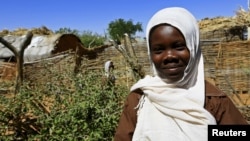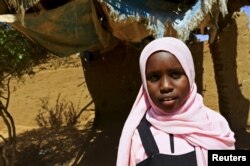The conflict that erupted in Sudan's western Darfur region 12 years ago shows no sign of ending but it has not discouraged displaced youngsters who have lived up to their entire lives in refugee camps from dreaming big.
Twelve-year-olds in the camps - interviewed as part of a Reuters photo essay - remain optimistic, despite ongoing instability in the vast territory, roughly the size of France.
Khadieja Omer Mohamed, a 4th grader at Sudan Aid School at the Dereige camp for the internally displaced in Nyala in South Darfur, wants to be a doctor in her adulthood.
Manasik Yousif Abdo-Rahman - wearing a pink veil and standing in shade created by rugs hanging on trees - was born in the Alsalam camps in El-Fasher in North Darfur.
She hopes to become an electrical engineer one day.
Abeer Abdallah Yonis, posing in front of a rickety gate and mud wall in El-Fasher, wants to teach.
The Darfur conflict began in 2003 when mainly non-Arab tribes took up arms against the Arab-led government in Khartoum, accusing it of discrimination.
The mass killings of a decade ago have eased, but the insurgency continues and Khartoum has kept up attacks on rebel groups, leaving many living in limbo in harsh conditions.
Khartoum mobilized proxy Arab militia to help quell the revolt in a region where many live in houses made of straw and grass. Some militiamen, known locally as Janjaweed, pillaged and burned villages and killed civilians.
The government has called the Janjaweed outlaws and denied supporting them.
Almost half a million people were displaced last year alone, the highest annual total since the height of the conflict in 2004, U.N. figures show.
According to the U.N., about 4.4 million people need humanitarian assistance in Darfur and more than 2.55 million remain displaced.
But 12 years on, the 12-year-olds who have known little else seem remarkably focused on a better future.
Mohamed Ali Ishag displays a captivating smile for the visiting Reuters photographer. In the future, he says, he wants to be an aircraft engineer.









